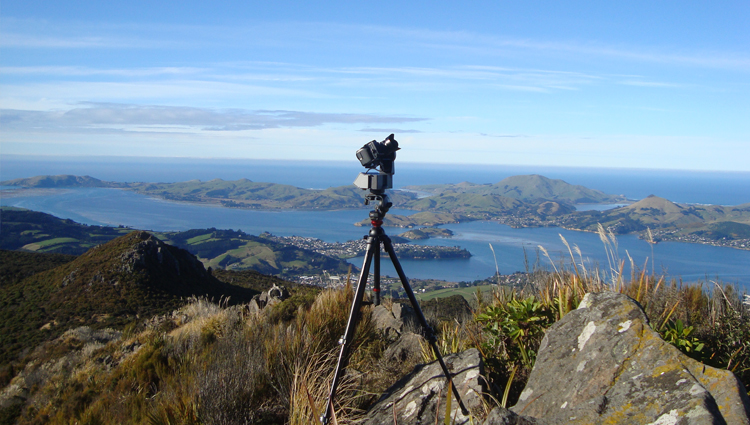Kids Panning For The Environment

Image credits: Samuel Mann via Wikimedia Commons
(Inside Science) -- In 2008, students at the private middle school Fanny Edel Falk Laboratory School in Pittsburgh, Pa. exchanged high-resolution photographs of their city with shots taken by students from a school located in Soweto, South Africa. This intercontinental exchange was part of a global project that teaches students to capture and explore highly detailed digital images to raise their awareness of the environment while exposing them to other cultures.
The students from both schools zoomed in to explore minute details within huge panoramic photos shot with a new robotic camera system built in Pittsburgh at Carnegie Mellon University.
The students found puzzling features -- the American students wondered why there were boxes on Soweto roofs, and the African students noticed Pittsburgh's air pollution and compared it to plumes in their panorama. An online discussion followed about what they could do to make the global environment sustainable, and also provided an explanation about the rooftop boxes: high winds can blow away roofs, so residents fill crates with heavy objects to hold the roofs in place.
Both student groups are among 20 schools participating in the Gigapan Youth Exchange Project, a collaboration between Carnegie Mellon and UNESCO. The project trains teachers and students how to operate a GigaPan, a robotically-controlled digital camera that shoots images 1,000 times more detailed than the picture quality of a high definition TV.
To specify how wide photographers want their panorama, they punch numbers into a keypad on a robotic mount. A microprocessor inside calculates the size of each exposure and the number necessary for the pan and moves a digital camera accordingly. A small robotic finger pushes the shutter button for each exposure. The exposures are stored on the camera's flash card and afterwards copied to a computer. Stitching software combines them to form a single gigapixel panorama with 100 times more data than an ordinary photograph. Students post their images on a website and can examine details by scrolling and zooming through the shot. It feels like flying into a picture or exploring the world through a microscope. Anyone can take a snapshot of a section of the panorama, and comment or ask a question in a dialog area below.
The exchange need not be international. Falk students interacted about waste management with in-state peers 30 miles away at the Burgettstown Outdoor Education Center, which was developed so the community could observe and appreciate their diverse environment. By showcasing remediation of discharge from abandoned mines, the center enables visitors to explore that process. The Burgettstown students photographed a remediation site, a gas well and two ponds, one of which had been cleaned up. The Falk students noticed the difference and the resulting dialog helped the rural students reflect on the water pollution that results from drilling for natural gas -- a practice known as fracking -- in a formation of Marcellus shale, according to Laura Tomokiyo, director of the exchange project.
"The exchange showed me what my students were thinking based on what we've discussed in class," said Falk instructor Eileen Coughlin, "I was also able to assess what my students retained about water pollution."
Dror Yaron coordinates community outreach for Carnegie Mellon's CREATE laboratory, which created the Gigapan system. In 2009, Yaron worked with National Geographic photography camps to mentor 20 underprivileged high school students from South Dakota's Native American Pine Ridge reservation. Initially uninterested, the students eventually developed enthusiasm for the project and began photographing natural locations such as the Wounded Knee memorial site and the inside of a tepee.
But according to Yaron, a group of Latino students from Florida that participated in a 2010 BioBlitz photo camp were enthusiastic about the project from the start. BioBlitzes are 24-hour gatherings during which volunteer scientists, families, students, teachers, and community members team up to find and identify as many species of plants, animals and other organisms as possible. These teens were great team players and very close-knit, said Yaron. Their Gigapans documented volunteers counting species, but their favorite shot was their group photo.
In Chad, Yaron said that photography is not culturally accepted and the government discourages photography. Because there was little photographic precedent, students at this camp took innovative photographic approaches, shooting at unusual, interesting angles. "They picked it up quickly and were empowered and confident with the technology," said Yaron.
But campers in Chad had no computer access because their program did not work within the school system. Instead of exploring panoramas digitally, they made do with huge prints, taped ribbons to highlight details they found interesting and wrote comments on Post-it Notes.
So even without all the digital technology, Gigapans help students learn to be stewards of the planet.
